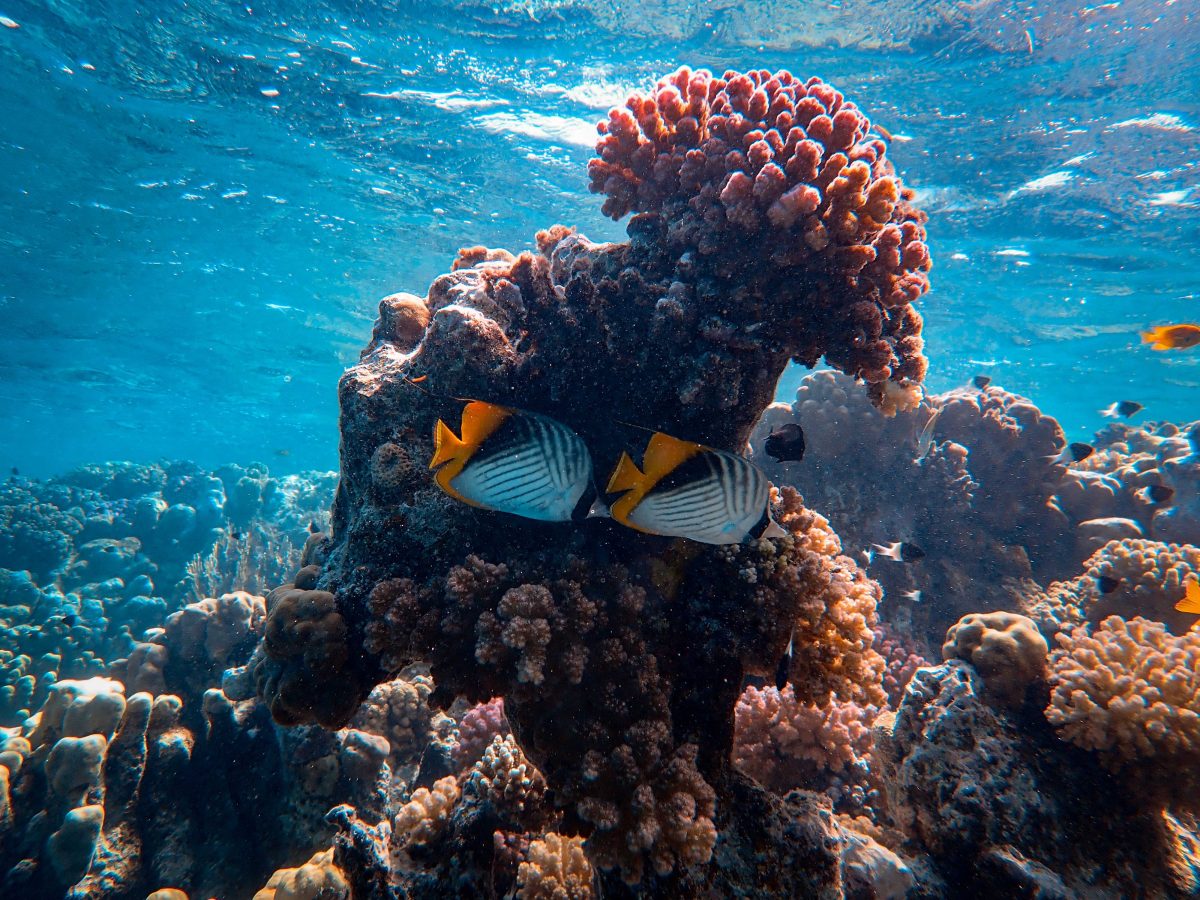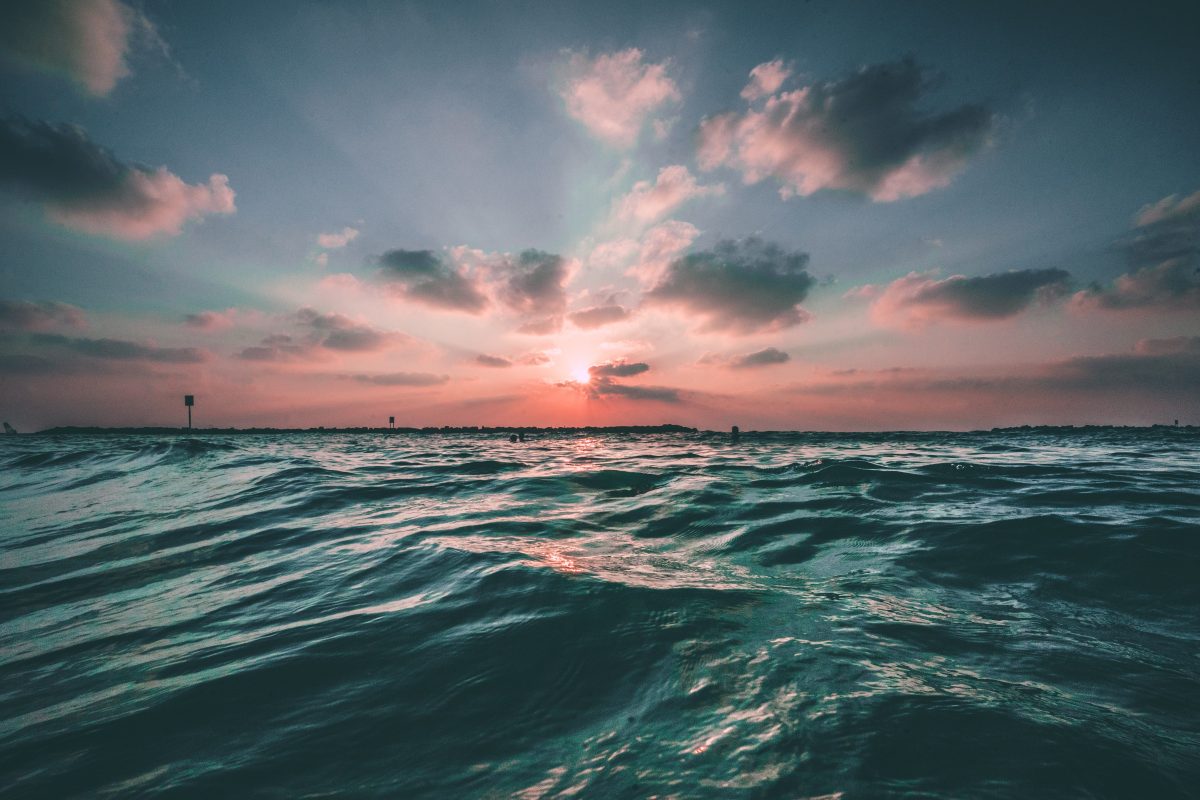Sarah Caballero’s article is adapted from her submission to the Eat Blue Essay contest, a sponsored essay contest by the Research Chefs Association and BlueNalu in which culinary students from around the globe answered the questions “What does it mean to you to Eat Blue™? How do you incorporate this into your daily life and find inspiration to Eat Blue™ in your personal and professional journey?” Sarah was a finalist in the competition.
We Live on Planet Ocean
Earth is 70% ocean. 70%. Let that sink in. It is a wonder the planet it is called “Earth” and not “Ocean,” that environmental stewardship is branded “Go Green” and not “Go Blue.” The ocean is home to 250,000 known marine species, although estimates suggest that this is barely scratching the surface. Most people, like myself, merely touch the edge of the ocean– exploring tide poles, skipping through foaming waves in the tide, digging up sand crabs from the wet sand. And this may be a uniquely Southern California experience, with the nearest coastline 30 minutes away. The miles of ocean that lie beyond the horizon and below the surface are often out of sight, out of mind. I remember snorkeling for the first time in La Jolla Cove, California. As I slowly floated past swaying kelp and speckled sand, a school of bright-orange Garibaldi fish, the protected state fish of California, gracefully swam just feet under me. Fear gripped me (I was also terrified of encountering leopard sharks, a popular snorkeling attraction), and I lost my breath as I frantically swam back to shore. I had gone to aquariums with my family since I was an infant. I had looked at decorative tanks of fish in doctors’ offices, dentist offices, and restaurants. Yet somehow, I still felt inadequate to meet the oceanic world face-to-face, without glass barriers, just me + the fish. And this hesitation is hardly a product of my own inexperience; some estimates suggest that 80% of the ocean is still unexplored, unknown.

The Difference Between Eating “Fish” and Eating Blue
Why is it that the place where our fish come from seems so foreign? Why is it that when I went to order tacos at Wahoo’s Fish Taco and asked the cashier “if the fried fish came from sustainable sources,” I got a blank stare as if I had asked to bring in a pet hippopotamus? The ocean, and not just the surface but also everything below it, is out of sight and often out of mind. Ironically, the ocean has found ways to take care of us. Omega-3 fatty acids from a variety of fish and algae improve heart, brain, and eye health. Sponges and corals spur the development of unique antibiotics. Half of the oxygen we breathe is produced by the ocean. The ocean is life.In one of my old college dining halls, I used to be served a fried fish sandwich. The “fillet” was shaped into a diamond and contained “fish”. I think it was cod, but the meat had been ground and shaped beyond recognition, deep fried, frozen, packaged, shipped, and stored. Never once did I connect this fried ship sandwich with the ocean.
The seafood decisions I make and the seafood I eat can either be just “f-i-s-h,” or they can celebrate the ocean, make me proud to support sustainable fishing practices, and promote education and awareness about ocean conservation.
Committing to Our Ocean
I have always been passionate about conservation and environmental stewardship. I turn off lights when leaving the room. I conserve water during showering. I recycle. I reuse clothing and restrain from impulse buying. I conserve gasoline when possible. But what could I do to mitigate ocean pollution and species endangerment? I felt that my impact halted at the shoreline. Now, I know that that impact extends to the supermarket refrigerator doors, to the restaurant counters, to the pen and the paper. The next time I sit down at the table to eat a fried fish sandwich, I don’t want to think about how the “fish” might be “cod” before being in a deep freeze for months. I want to know that the bite I put in my mouth is fresh, nutritious, and wholesome. I want to know that the bite I put in my mouth didn’t endanger other marine species. I want to know that the bite I put in my mouth supports local economies that fish sustainably. I want to know that the bite I put in my mouth is preserving ocean biodiversity. I want to feel connected to the ocean. I want to know that the 30% is taking care of the 70%. I want to Eat Blue.
